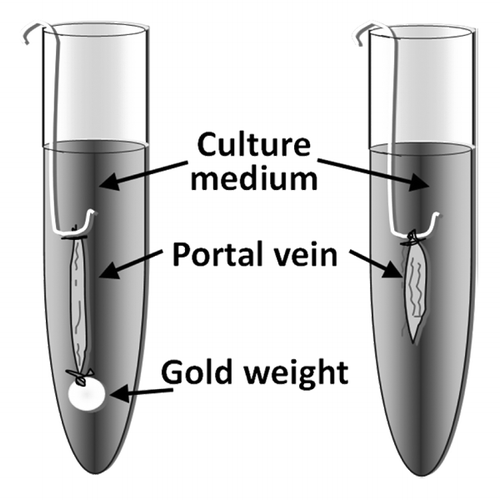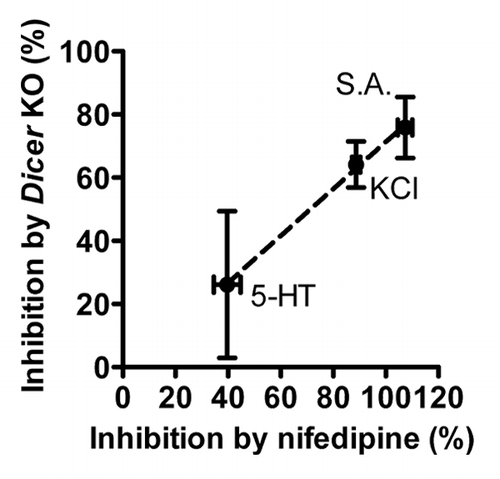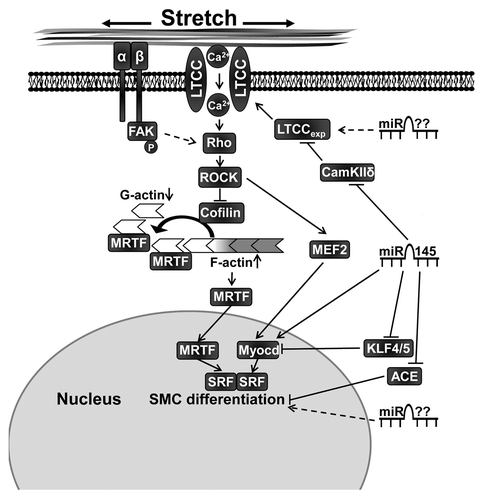Figures & data
Figure 1. Mouse portal veins are stretched by attaching a gold weight at one end of the vessel. The portal veins are then placed in a cell culture incubator for up to 5 days.

Figure 2. The level of inhibition of various contractile responses in portal vein by Dicer KO correlates with force inhibition by the L-type calcium channel blocker Nifedipine. 5-HT: serotonin, KCl: potassium chloride, S.A.: Spontaneous activity. n = 3–4.

Figure 3. Contractile differentiation of vascular smooth muscle cells is promoted by mechanical stretch and miR-145. Regulation of L-type calcium expression (LTCCexp) via miR-145 and possibly other miRNAs plays an important role for stretch-induced differentiation. Stretch activates the Rho/Rho-kinase (ROCK), which promotes actin polymerization partly via inhibition of cofilin. Myocardin related transcription factor (MRTF) is then released from monomeric actin (G-actin) and translocates to the nucleus where it, as a co-factor to serum response factor (SRF), promotes smooth muscle differentiation. MicroRNA-145 also regulates contractile differentiation via additional targets such as angiotensin converting enzyme (ACE), Kruppel-like transcription factors (KLF) 4 and 5 and a direct positive regulation of myocardin (Myocd). Furthermore, it is likely that several so far unknown miRNAs are involved in smooth muscle cell (SMC) contractile differentiation. FAK, focal adhesion kinase; MEF2, myocyte enhancer factor-2.
